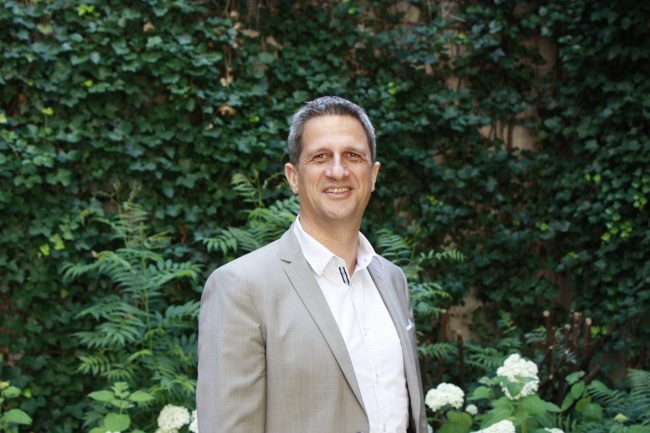A cautious welcome to the EU’s buffet of ideas on ageing
AAL’s Klaus Niederländer welcomes the EU’s focus on Europe’s ageing population in its latest green paper and public consultation. But despite the attention it has brought to the challenges this issue brings for us all and some of the pathways to meeting these challenges it highlights, he feels it misses an opportunity to commit to driving the real societal change needed

Despite being identified by President von der Leyen as one of the three megatrends transforming European society, demographic change has never received quite the same attention as the other two great societal challenges of our time – climate change and digitalisation.
But an ageing population is having a serious impact on a society that was established to function when lifespans were shorter, people stayed in one place and there was a much shorter period of older age for most of us. Put simply, by living longer, we are putting an enormous strain on established systems like pension provision, healthcare and the provision of social care for the more frail. The social contract whereby those paying tax support those who have stopped paying tax, a form of intergenerational solidarity, is under strain due to a shrinking working population. Things will need to change.
While the EU has always addressed this at the operational level – funding research and innovation to help cope with our shifting demographic – it has now changed course with the appointment of a commissioner for democracy and demography, Vice President Dubravka Šuica, whose first task was to commission a green paper and public consultation on ageing.
The paper was published earlier this year and launched a 12-week public consultation on the issues it raises. It should be seen as central pillar in the EU’s response to demographic change and as a means of raising awareness of the socio-economic impacts this change is having in Europe. At the same time, it looks to recognise and harness the opportunities ageing presents, covering the promotion of healthy lifestyles and lifelong learning to the strengthening of health and care systems specifically to be able to cope with a larger older population.
AAL has been one of the pioneers of bringing ageing, living longer, more active lives and demographic change into the European public domain over the past decade and its shifting narrative is reflected in much of what the green paper seeks to cover. AAL welcomes how the EU is attempting to bring the whole issue to the policy level and for more extensive debate.
“It’s high time that this was done,” says Klaus Niederländer, AAL’s director of the organisation’s central management unit. “Demographic change is happening NOW and we are going to feel it even more over the next decade, so raising the issues to this level and carrying out a public consultation is a positive step. Ageing is not just about old people – ageing concerns us all and this more philosophical message about ageing is addressed in the green paper. It is about us, at every stage of our lives.”
But Niederländer also recognises the limitations of this exercise, particularly in terms of any follow-up to the green paper given the EU’s limited authority in this domain, which is mainly handled at the national level where policy making is concerned. Most of the issues raised in the paper will be addressed by individual countries or at the local level and all the EU can do is try to link with those elements about which Europe does actually have things to say.
“At the same time this is a clear change of direction for the EU,” he continues. “The topic has arrived at the higher level. While previously occupying space within research and Horizon 2020, it now has a commissioner and vice president and there is this policy paper. This is at a different level to AAL – that was an implementation programme, a funding programme.”
In this sense, Niederländer feels that the paper is trying to give Europe a purpose in this domain, another positive step. “There is a need for Europe in this space,” he says. “These topics don’t stop at the border. We may all have different health and care systems, but look at what COVID has done to that and the benefits of collaboration. Re-evaluation needs to happen and this is a start. It’s a mapping exercise – describing what ageing is and what we mean by it, where it has implications and what these are.
But Niederländer is also concerned that though the paper covers many of the issues facing European society related to an ageing population and positions Europe as a thought leader in this space, it leaves him feeling “hungry for more”.
“It’s a buffet of ideas trying to cover everything but there is little idea in it of what is really important. What should I put on my plate? What should we be doing? I believe the document is just a little too general.”
One key omission he identifies is the lack of any detail in the paper about the roles of the different actors involved in addressing the challenges of Europe’s changing demographic. He believes it rightly talks about the “people issues”, but talks little about the people involved in addressing those issues.
“At AAL, we talk about end users, researchers and companies but in the green paper, at the strategic level, who are the actors here? Who do we need to deal with? Is it governments in general or is this more about ministries of health and education? Who is in this sphere that we can identify with? If you don’t link people to issues so that they can act, then taking effective action will be difficult.”
In a similar way, Niederländer also speaks about the lack of any systemic viewpoint in the paper, with the narrative being very descriptive and not containing anything he describes as intrinsic. “To me, it doesn’t link the relationships between the countries, regions and people and elaborate on that,” he says.
“It presents a very outside perspective, but where is the inside perspective? The paper rightly acknowledges that this is an issue that impacts on us all, but I don’t feel fully engaged with it; it is difficult to respond to.
“Perhaps some more chapters could have been introduced aimed at different people so that they could feel addressed by it. Instead, we have one document that is everything for everyone, but it risks delivering little for only a few,” continues Niederländer. “This won’t be about building more hospitals and care homes, it is about life at home and in our communities and how we upgrade our social systems with an increasing virtual social infrastructure element. And with a focus on the social aspects of life, we bring the citizen into the debate – the policy discussion is one thing, but where do I fit into that?”
While Niederländer may be concerned about the gaps in the green paper, he is hopeful many of these will be addressed in the public consultation that ran for 12 weeks after its publication and believes the EU is doing all it can, given its limitations in a space that impacts on the way we live our lives and the ways communities work together. He does see a clear role for the EU.
“For me Europe is the perfect laboratory,” he says. “You can test things that you cannot test in your own country or region, where there are too many vested interests. So, we can define the roles that are needed at a European level and I think this will happen naturally. Europe can be a learning environment for national and regional, even local systems and provide a guiding, supporting role. I can certainly see this being positive on the entrepreneurial level.”
With Europe being the laboratory for new ideas, the next logical step for Niederländer would be putting successful ideas into action – and for that the EU is able to step in with funding. “If this policy debate helps to provide some clear priorities, then I would like to see it move towards a European action plan,” he says. “The task will be how action for ageing well can be integrated into the health and care funding being made available.
“This is complex, but the paper contributes a lot towards this debate. The concern for me is what next?”.
For Niederländer what should come next is clear in terms of how this document feeds into the debate about our ageing population – communication. He believes communication is needed now to help us move closer towards strategic priorities and operational goals, and in order to develop a clear pathway to implementing some of the paper’s ideas, to be pushed by the political will that clearly exists and supported by funding.
“We need to go from ideas to delivery,” he says. “We have done the research and we have found some promising topics – so how do we get those topics implemented and upscaled? We need the silver transition to run in parallel with the green and digital transitions. We need a silver deal for Europe!”
Perhaps Niederländer is more enthusiastic about the future focus because the paper is clear about one thing – the link between education and health being key to healthy ageing as a process that starts at birth. “By education, I mean continuous training, entrepreneurship, lifelong learning – and with health it is not just about the cure, it is about social care and health prevention – and all the inter-relationships within that. It is a very dynamic thing and therein lies the real challenge more so than in the green and digital challenges, as it is about people rather than technology.”
Niederländer is calling for us all to adopt a new mindset in terms of ageing, not looking at imposing systems that take care of people as they become old but building a new infrastructure for the 21st century, one that is based on self-determination, autonomy and co-creation. This is not an infrastructure that focuses on support and providing facilities for people in later life, or systems that see people lonely in their homes, trapped or unhealthy due to poverty. He talks of a virtual infrastructure that doesn’t take people somewhere else to care for them but goes to the people, into the communities.
“It is here that education and health are key. The healthier people are, the fewer institutions of the industrial age – hospitals and care homes – we will need. We want to be at home and in our communities. Yes, we need digitalisation for that and the green transition, but this is about us, about people.
“We need to move from assistive technology – where someone is assisting us – to autonomy. Support needs to be focused on autonomy and not dependence.
“For me, that it is the change in narrative that is needed. To take things into our own hands, tap into our own resources, from ourselves and the community – and the state is there to support this, to invest into autonomy, not dependency.
“That is fundamental and the bedrock for this is health and education,” he adds optimistically.
What he is afraid of, however, is that because EU states are so indebted after the pandemic, they will cut back even more on health and education and he believes that would be a disaster.
“That is where I would invest ALL our resources. That is where we have the key to unlocking human potential, that will take us towards a future of autonomy, participation and life continuation, together, young and old, united in this diversity.”

